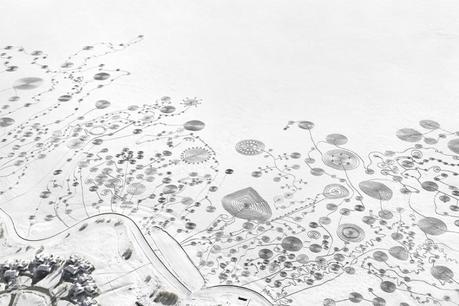
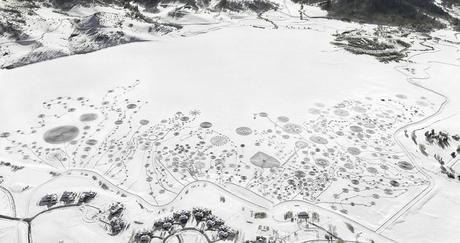
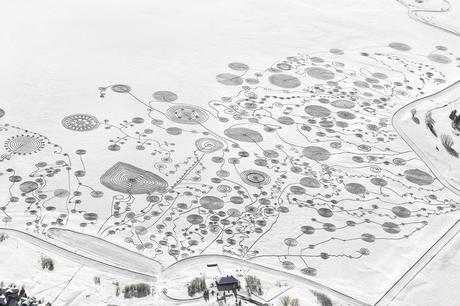
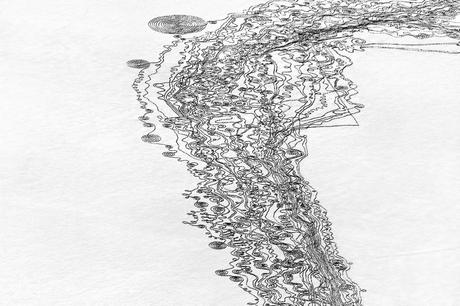


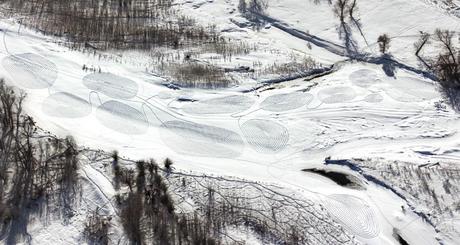
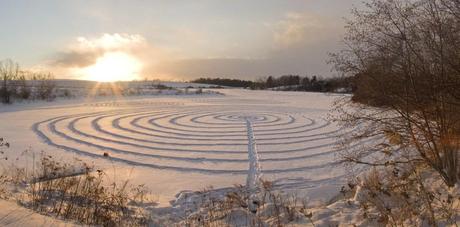
Sonja Hinrichsen is a snow artist and with a pair of snowshoes and a long walk she transforms the peaceful caked snow landscape into something special.
The sprawling designs look almost like abstract crop circles. Hinrichsen creates her stunning temporary works mostly in Colorado, with trips to New York and the French Alps, too. They can take up to a few days to complete, with the help of 50 or 60 volunteers.
“Snow Drawings started out of play, during an artist residency in the Colorado Rockies in the winter of 2009,” Hinrichsen explained to HuffPost. “I had brought snowshoes — mainly so I could go hiking in the mountains, and not get stuck in waist-deep snow. However, there were these amazing stretches of pristine snow, no footprints, not even animal tracks, as the snow was so deep. So I started walking into them and making all kinds of little patterns. I didn’t think of it as an arts project at all, it was just for fun. At some point I took my camera with me to photograph the patterns — and that’s when it became interesting.”
For Hinrichsen, open landscapes and frozen lakes make the most ideal spaces for snow drawings. Some designs are based on the natural surroundings. A 2014 work in Colorado, for example, channels the spirit of the Yampa River, in which volunteers walked across a lake wearing snowshoes to pay tribute to the “moods of water.” Most involve concentric circles; ethereal echoes that seem to reach up and out beyond our atmosphere.
“My environmental interventions are temporary,” she added, “especially the snow drawings. They are there only until the snow melts or the next snow storm — in some cases, they even disappear due to snow drifts that simply fill in the tracks with fine snow. Sometimes they are there barely long enough for me to be able to photograph them… Sometimes it feels like magic.”
The pieces, she asserts, live on in the resulting photographs. “That’s enough. I don’t want to leave any traces in nature. I feel like this planet is so scarred already through human activity and I don’t feel like I want to add more traces as an artist. I never refer to my work as land art, but rather as ‘interventions in the environment’ — if I have to name it.”
